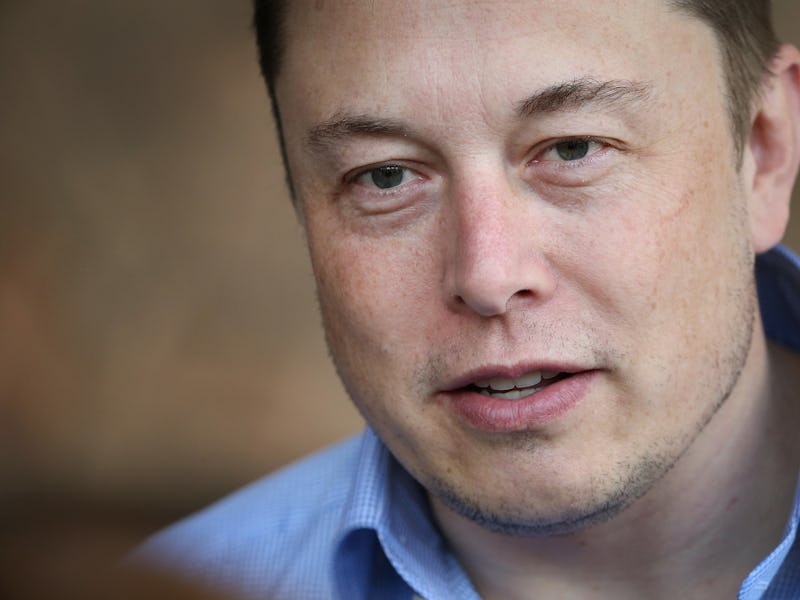Elon Musk Explains Why Radar Is Future of Tesla's Autopilot
Teslas might now be able to see around cars ahead of them.

Tesla founder Elon Musk announced on Sunday a set of upgrades for the company’s Model S and Model X cars. The most important improvement is to the cars’ Autopilot system, which will switch the primary sensor systems from the onboard camera to radar. All Tesla cars built since 2014 already have the radar system installed, which Musk said means Tesla will be able to switch to the new system without having to change any hardware.
“The most exciting thing is we’re making much more effective use of radar,” Musk said on a call with reporters. The radar system was initially intended as a supplementary sensor to the camera, but radar has the potential to be considerably more versatile and responsive. “It does not matter what the object is, it just knows that there’s something dense that it’s going to hit and it should not hit that. Whereas the vision system really needs to know what the thing is.”
When asked whether this system would have saved the life of Joshua Brown, who was killed earlier this year in a car crash while riding in a Tesla, Musk said he obviously couldn’t speak with certainty, but he did say that he and the team believe these upgrades would have been far likelier to detect the tractor trailer that the car crashed into. The radar system would not be dependent on detecting the oncoming object visually, which didn’t happen during the fatal crash because of unusual brightness.
However, Musk emphasized during his introduction that the autopilot improvements couldn’t deal with every potential problem. “I do want to emphasize this does not mean perfect safety,” he said, though he did note that he hopes this will cut the accident rate roughly in half. “Perfect safety is really an impossible goal. It’s really about improving the probability of safety. That’s the only thing that’s ever really possible. With 200,000 cars, eventually we’ll have millions of cars driving millions of miles a year, so even if something is a one in a billion chance, there won’t ever be zero injuries, zero fatalities.”
The volume of cars on the road does, however, improve one of the other tools in Tesla’s safety arsenal, as this is where the fleet learning system comes into play. As Tesla cars pass potential hazards and communicate these points to the rest of the fleet, it becomes easier for the system to develop an accurate sense of what is on the road.
A Tesla Model S car is displayed at a Tesla showroom on November 5, 2013 in Palo Alto, California.
That also helps explain why it’s only now that Tesla is ready to make the switch to radar as the primary sensor. Musk said before now that radar was susceptible to false positives when it caused a braking event when it wasn’t, in fact, necessary. Now that the system has improved to the point that false positives should be a rarity — Musk didn’t have exact figures, but it sounds like less than once a year is roughly what Tesla is shooting for — the Autopilot system can take advantage of radar’s other advantages.
“Being radar it can see through rain, fog, snow, dust, and it recovers quite easily,” Musk said earlier in the call when describing radar’s advantages over the camera. “So even if there was something where you’re driving down the road and visibility was very low and there was a big multi-car pileup ahead of you, you can’t see it, but the radar worked, it would initiate braking before your car being added to the multi-car pileup.”
The radar system is best-suited to detecting massive or metallic objects, like cars and trucks. Musk acknowledged it might have more trouble with “fluffy” objects. When asked what this would mean for animals like moose or deer, Musk said he wasn’t certain, but that a moose would likely be big enough for the Tesla to detect and avoid it, but a small deer might not be.
One more unique advantage of radar is its ability to see beyond what’s immediately in front of it. “We’re confident we can use radar to look beyond the car in front of you by bouncing radar off the road and around the car,” Musk said. “So even if there was something that was obscured both by vision and radar we can use the bounce effect of the radar to look beyond that car and still brake.”
Tesla expects to initiate the software upgrade imminently in the United States, with worldwide updates coming in the next one or two weeks.